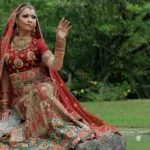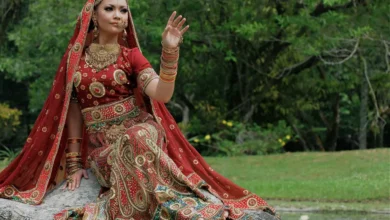Baju Melayu, a traditional Malay costume, is a symbol of Malaysia’s cultural identity and heritage. This attire, worn predominantly by Malay men, reflects the nation’s rich traditions and customs. Its design, fabric, and purpose hold significant cultural value, making it an iconic representation of Malaysian fashion.
The Baju Melayu is not merely clothing; it is a statement of pride and respect for cultural values. It showcases a blend of tradition, modesty, and style that has been cherished for generations.
Key Characteristics of Baju Melayu

The Baju Melayu consists of a long-sleeved shirt paired with matching trousers, complemented by a kain samping (a decorative sarong-like cloth) and sometimes a songkok (traditional hat). Its simplicity and elegance are what make it universally admired.
History and Evolution of Baju Melayu
Origins of Traditional Malay Attire
The origins of the Baju Melayu can be traced back to the Malay Peninsula during the Malacca Sultanate (15th century). During this era, the garment evolved as a symbol of respectability and adherence to Islamic principles.
See also A Cultural Tapestry: The Timeless Elegance of Malaysia’s Baju Kurung
A Cultural Tapestry: The Timeless Elegance of Malaysia’s Baju Kurung
The design of Baju Melayu was influenced by traditional Arabian robes, incorporating long sleeves and loose-fitting trousers to ensure modesty. Over centuries, local adaptations gave it the distinct features we see today.
Influence of Regional Cultures
Malaysia’s strategic location fostered interactions with diverse cultures such as Chinese, Indian, and Arab traders. These interactions subtly influenced the Baju Melayu, particularly in its textiles and embroidery patterns.
Modern Adaptations and Fashion Trends
While traditional Baju Melayu remains popular, modern versions now feature tailored fits, vibrant colors, and embellishments. These adaptations appeal to younger generations while preserving its cultural essence.
Components of Baju Melayu

The Shirt (Baju)
The shirt is designed with long sleeves and a stand-up collar, often featuring buttons at the neck. It can have either Cekak Musang (raised collar) or Teluk Belanga (collarless) styles.
See also Discovering the Elegance of Traditional Clothing in France
Discovering the Elegance of Traditional Clothing in France
- Cekak Musang: Known for its structured appearance and suitability for formal occasions.
- Teluk Belanga: Originating from Johor, this style has a simple neckline and is considered more traditional.
The Trousers (Seluar)
The trousers, matching the shirt’s fabric, are loose-fitting and allow comfort and mobility. They emphasize modesty, adhering to Islamic dress codes.
Kain Samping
The kain samping is a key element of the Baju Melayu, adding flair and sophistication. It is usually tied around the waist and crafted from intricate fabrics like songket or batik.
Songkok
The songkok serves as a finishing touch to the attire, symbolizing respect and formality. It is particularly prominent during festivals and official events.
Cultural Significance of Baju Melayu
Symbol of Identity
The Baju Melayu is a marker of Malay identity and heritage. It represents unity among Malay communities across Malaysia, reflecting shared values and traditions.
Religious Implications
The modest design aligns with Islamic teachings, ensuring adherence to principles of decency. The attire is often worn during Friday prayers, Eid celebrations, and Nikah ceremonies.
Political and Diplomatic Representation
Leaders and diplomats frequently wear Baju Melayu during formal events and international summits, portraying Malaysia’s cultural pride on the global stage.
Fabric Choices in Baju Melayu
Traditional Materials
Historically, Baju Melayu was made from handwoven materials like silk or cotton. These fabrics were prized for their comfort and durability.
Contemporary Fabrics
Modern Baju Melayu incorporates synthetic blends like polyester and rayon, offering affordability and wrinkle resistance while maintaining the garment’s aesthetic appeal.
Significance of Songket
Songket, a luxurious handwoven fabric, is often used for the kain samping. Its shimmering threads and intricate patterns make it a symbol of prestige and elegance.
Craftsmanship Behind Baju Melayu

Traditional Weaving Techniques
Artisans use traditional loom weaving to craft fabrics like songket and batik, requiring precision and skill to achieve intricate designs.
Tailoring and Customization
Custom-made Baju Melayu allows individuals to choose fabrics, colors, and fits that reflect their personal style. Skilled tailors ensure that every piece is a work of art.
Role of Embroidery
Embroidery adds a layer of elegance to Baju Melayu, with motifs inspired by flora, Islamic art, and cultural symbols.
Regional Variations of Baju Melayu
Johor’s Teluk Belanga
The Teluk Belanga style, popular in Johor, is known for its simplicity and practicality. Its design is ideal for everyday wear and casual events.
Kedah’s Traditional Style
In Kedah, Baju Melayu is paired with a longer kain samping that often reaches below the knees, showcasing regional distinctiveness.
Terengganu’s Songket Influence
Terengganu’s Baju Melayu often features lavish songket patterns, making it a popular choice for weddings and festivals.
Festivals and Events Featuring Baju Melayu
Hari Raya Celebrations
During Hari Raya Aidilfitri and Hari Raya Haji, Malay men wear their best Baju Melayu, symbolizing renewal and unity.
Weddings and Engagements
In Malay weddings, the groom often dons a beautifully tailored Baju Melayu, complemented by a keris (traditional dagger) for ceremonial purposes.
Official Ceremonies
Government officials and leaders wear Baju Melayu during national events like Merdeka Day, showcasing its significance in Malaysia’s identity.
Care and Maintenance of Baju Melayu
Cleaning and Storage
Proper cleaning methods, such as dry cleaning for delicate fabrics like silk, are crucial. Storing the attire in breathable garment bags prevents damage.
Preserving Embroidery
Handwashing embroidered garments ensures the longevity of intricate patterns and prevents fading.
Seasonal Considerations
Moisture control during Malaysia’s humid seasons helps maintain the quality of Baju Melayu fabrics.
How to Wear Baju Melayu Properly
Draping the Kain Samping
The kain samping should be tied securely around the waist, either over or under the shirt, depending on regional customs.
Pairing Accessories
A songkok and traditional footwear like capal enhance the overall look.
Styling for Formal and Casual Settings
Formal occasions often require a structured Baju Melayu with Cekak Musang, while casual settings allow simpler, unembellished styles.
Future of Baju Melayu
Blending Tradition with Modernity
The younger generation’s embrace of tailored fits and contemporary fabrics ensures the Baju Melayu remains relevant in modern fashion.
Sustainability in Fabric Choices
Efforts to use eco-friendly materials like organic cotton and recycled polyester contribute to sustainable fashion practices.
Expanding Global Recognition
Promoting Baju Melayu on international platforms fosters appreciation for Malaysia’s cultural heritage.
Capturing the Spirit of Baju Melayu
The Baju Melayu is more than a garment—it is a symbol of unity, tradition, and pride. Its timeless design and cultural significance continue to resonate with Malaysians and admirers worldwide. Wearing the Baju Melayu is a celebration of Malaysia’s heritage and an embodiment of its identity.
